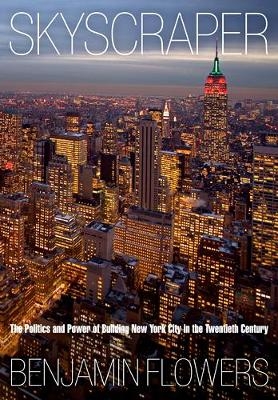
Skyscraper
University of Pennsylvania Press (Verlag)
978-0-8122-4184-6 (ISBN)
Selected by Choice magazine as an Outstanding Academic Title
Nowhere in the world is there a greater concentration of significant skyscrapers than in New York City. And though this iconographic American building style has roots in Chicago, New York is where it has grown into such a powerful reflection of American commerce and culture.
In Skyscraper: The Politics and Power of Building New York City in the Twentieth Century, Benjamin Flowers explores the role of culture and ideology in shaping the construction of skyscrapers and the way wealth and power have operated to reshape the urban landscape. Flowers narrates this modern tale by closely examining the creation and reception of three significant sites: the Empire State Building, the Seagram Building, and the World Trade Center. He demonstrates how architects and their clients employed a diverse range of modernist styles to engage with and influence broader cultural themes in American society: immigration, the Cold War, and the rise of American global capitalism.
Skyscraper explores the various wider meanings associated with this architectural form as well as contemporary reactions to it across the critical spectrum. Employing a broad array of archival sources, such as corporate records, architects' papers, newspaper ads, and political cartoons, Flowers examines the personal, political, cultural, and economic agendas that motivate architects and their clients to build ever higher. He depicts the American saga of commerce, wealth, and power in the twentieth century through their most visible symbol, the skyscraper.
Benjamin Flowers teaches architecture at the Georgia Institute of Technology.
Introduction: Narratives of the Built Environment: Architecture, Ideology, and Skyscrapers
PART I. THE EMPIRE STATE BUILDING: THE SETBACK SKYSCRAPER, THE GREAT DEPRESSION, AND AMERICAN MODERNISM
1 Building, Money, and Power
2 Setback Skyscrapers and American Architectural Development
3 Capital Nightmares
4 The Politics of American Architecture in the 1930s
PART II. THE SEAGRAM BUILDING: THE ASCENSION OF THE INTERNATIONAL STYLE AND A SOMBER MONUMENT TO CORPORATE AUTHORITY
5 Architecture Culture into the 1950s
6 Clients and Architect
7 Gangland's Grip on Business
8 Modern Architecture and Corporate America in the 1950s
PART III. THE WORLD TRADE CENTER: URBAN RENEWAL, GLOBAL CAPITALISM, AND REGENERATION THROUGH VIOLENCE
9 Regeneration Through Violence
10 The Rhetoric and Reality of Urban Renewal
11 Cathedrals of Commerce: Minoru Yamasaki, Skyscraper Design, and the Rise of Postmodernism
Conclusion: Into the Future
Epilogue
Notes
Index
Acknowledgments
| Erscheint lt. Verlag | 12.10.2009 |
|---|---|
| Zusatzinfo | 51 illus. |
| Verlagsort | Pennsylvania |
| Sprache | englisch |
| Maße | 178 x 254 mm |
| Themenwelt | Geisteswissenschaften ► Geschichte ► Regional- / Ländergeschichte |
| Technik ► Architektur | |
| ISBN-10 | 0-8122-4184-3 / 0812241843 |
| ISBN-13 | 978-0-8122-4184-6 / 9780812241846 |
| Zustand | Neuware |
| Informationen gemäß Produktsicherheitsverordnung (GPSR) | |
| Haben Sie eine Frage zum Produkt? |
aus dem Bereich


